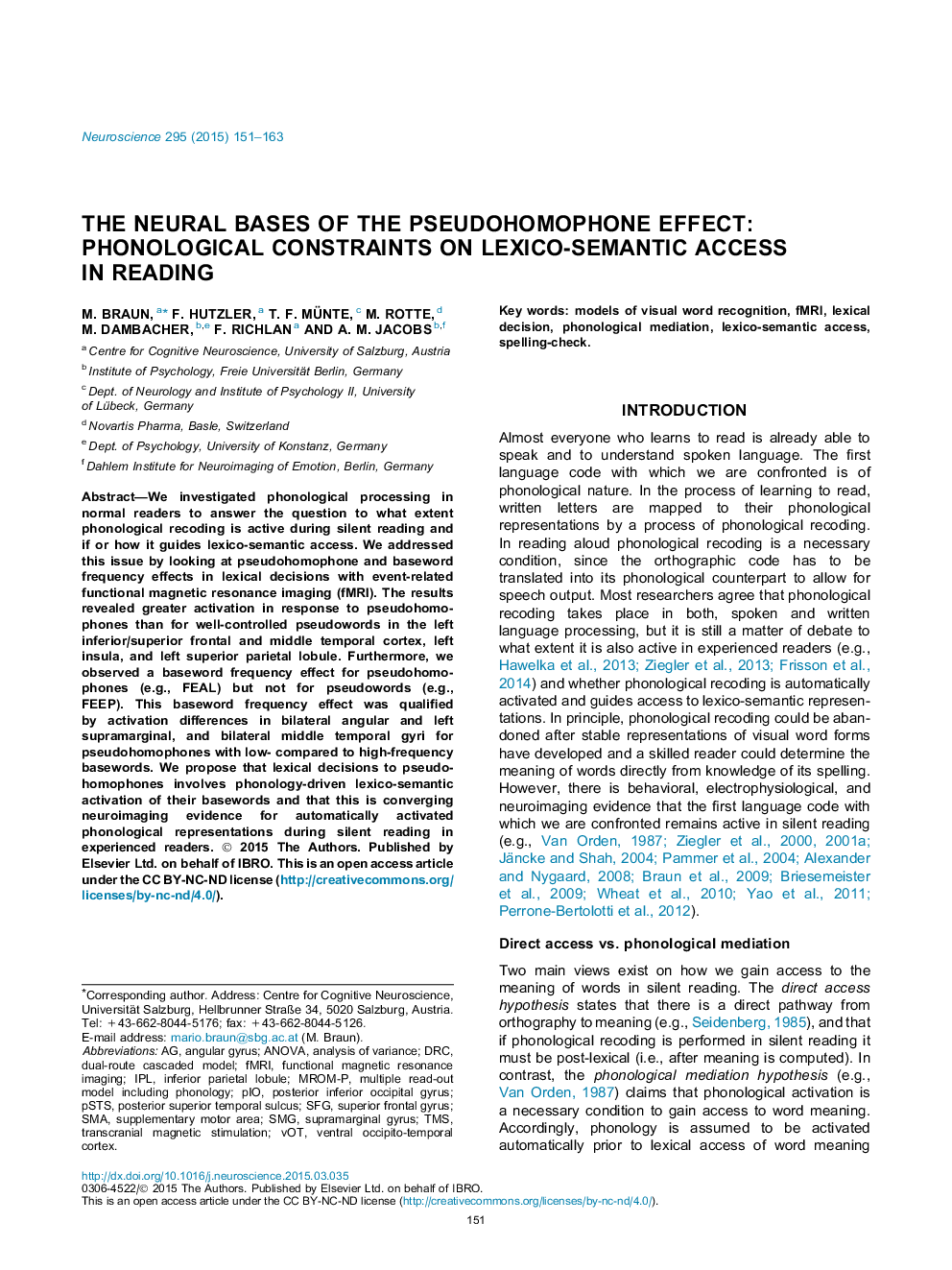| Article ID | Journal | Published Year | Pages | File Type |
|---|---|---|---|---|
| 6272460 | Neuroscience | 2015 | 13 Pages |
â¢Pseudohomophone effect associated with a spelling-check in superior parietal lobule.â¢Baseword frequency effect in middle temporal gyrus suggests lexico-semantic access.â¢Phonological recoding is active during silent reading in experienced readers.
We investigated phonological processing in normal readers to answer the question to what extent phonological recoding is active during silent reading and if or how it guides lexico-semantic access. We addressed this issue by looking at pseudohomophone and baseword frequency effects in lexical decisions with event-related functional magnetic resonance imaging (fMRI). The results revealed greater activation in response to pseudohomophones than for well-controlled pseudowords in the left inferior/superior frontal and middle temporal cortex, left insula, and left superior parietal lobule. Furthermore, we observed a baseword frequency effect for pseudohomophones (e.g., FEAL) but not for pseudowords (e.g., FEEP). This baseword frequency effect was qualified by activation differences in bilateral angular and left supramarginal, and bilateral middle temporal gyri for pseudohomophones with low- compared to high-frequency basewords. We propose that lexical decisions to pseudohomophones involves phonology-driven lexico-semantic activation of their basewords and that this is converging neuroimaging evidence for automatically activated phonological representations during silent reading in experienced readers.
